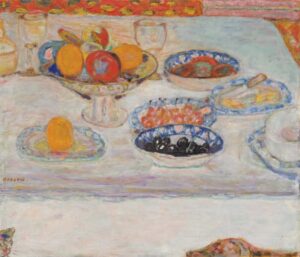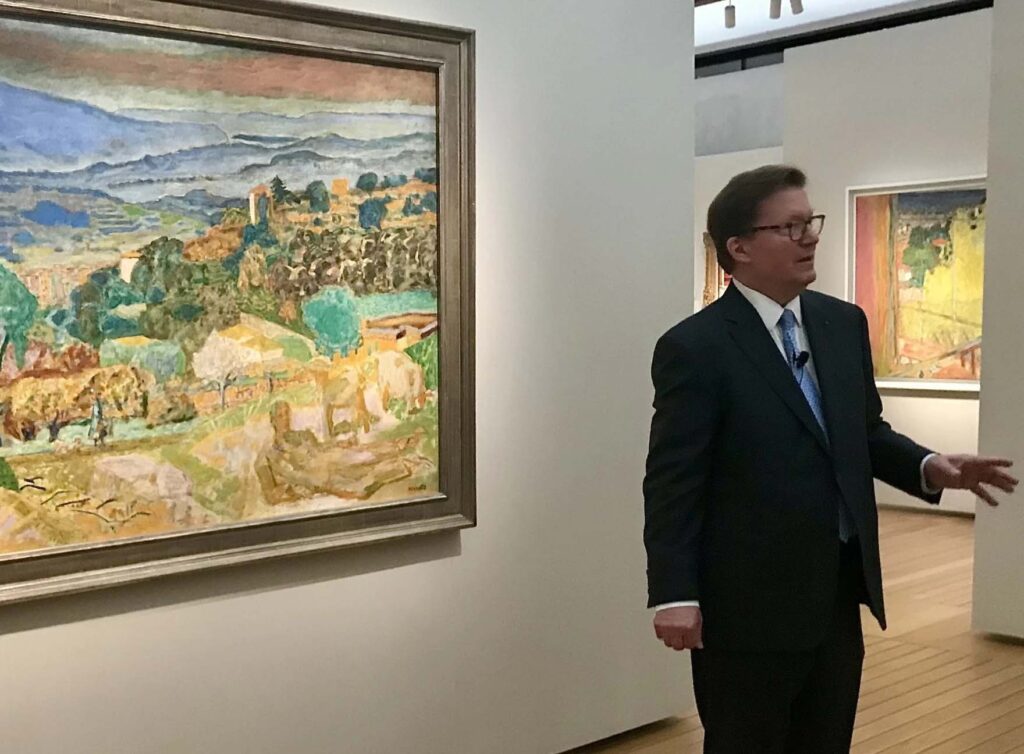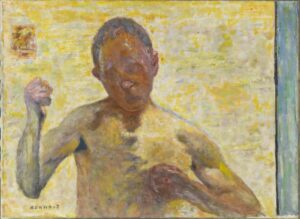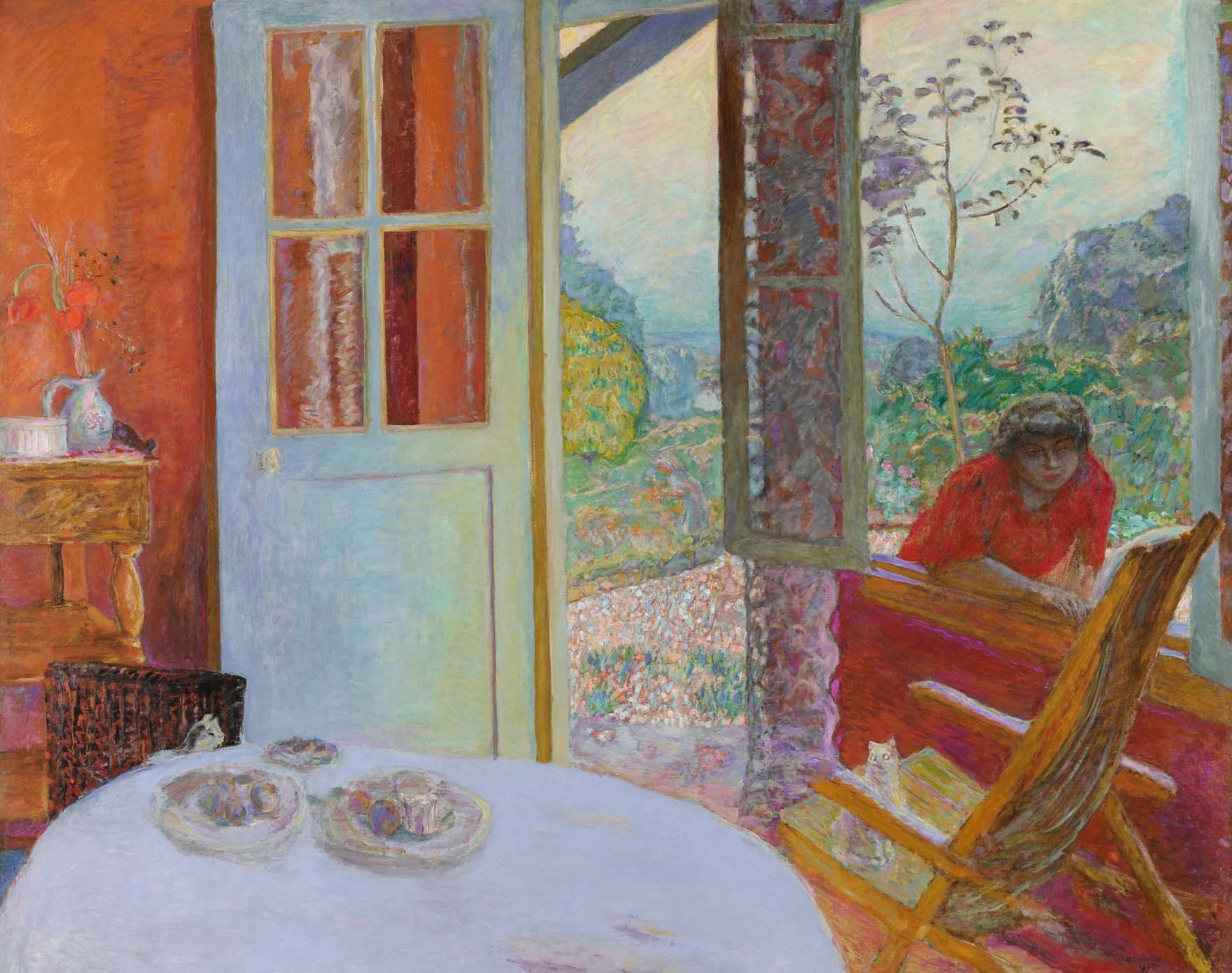From KERA News:
The Kimbell Art Museum currently has an exhibition of a great French painter — much like its popular shows of Impressionists and post-Impressionists: Monet, Renoir, Gauguin.
But this one is different. First, you may not have heard of Pierre Bonnard. He never became the household name his contemporaries did.
Second, the Kimbell exhibition, Bonnard’s Worlds, is not arranged like a typical retrospective. It doesn’t follow the artist’s life and artistry year by year.
That’s partly because when you first see a painting by Bonnard — like the 70 works at the Kimbell — you’re struck by his sumptuous colors, his artfully casual brushwork. And you’re likely to think, Ah, another French Impressionist. Or post-Impressionist.
And you wouldn’t be entirely wrong. Bonnard knew Toulouse-Lautrec and Georges Seurat. He traveled in those Parisian circles.
He and a number of artist-friends even formed a group called Les Nabis. Their work often reflected the post-Impressionist influence of Gauguin and the craze for decorative Japonisme, the Western adaptation of Japanese fabrics and artworks.

“Fruit and Fruit Dishes,” oil on canvas, c. 1930. Cleveland Museum of Art. Courtesy Kimbell Art Museum
In addition, Bonnard was a commercial artist. He illustrated a novel, designed furniture including a stained glass window for Tiffany. He first won notice for a poster he created for a brand of champagne.
So Bonnard was very connected to cultural trends. But if you see more of his oil paintings, you’ll start wondering just where Bonnard fits in all this. In fact, he’s been called the most idiosyncratic and sophisticated genius with color.
“I think we need to think of Bonnard in his own terms,” said George Shackelford, deputy director of the Kimbell and the curator of Bonnard’s Worlds.
“We’d never call Picasso or Matisse, you know, a post-impressionist,” Shackleford said. “And Bonnard goes so far beyond Impressionism so early in his career that he really needs to be thought of as a great modern painter.”
Bonnard lived from 1867 until 1947. So he lived through Impressionism, Cubism, Surrealism — all the early modern “isms.” He took note of these movements, but his artistry and humor slipped past easy categories.
In 1930, he painted a still-life with fruit on a table. But then, along the bottom, at the edge of the table, he tucked in a cat and a dachshund (favorite family pets) who are very intent only on each other.
What are they even doing here? Animals are not exactly “still.” And what cat cares about fruit? Or art? The animals provide an amusing dismissal of this still-life — and serious still-lifes in general.
“I would urge visitors to pay attention to the edges and the corners,” Shackelford said, “because often in a painting by Bonnard, the thing in the middle is really interesting, but there may be a commentary on it down in the lower right hand corner.”

Kimbell deputy director George Shackleford in front of Bonnard’s “Landscape at Le Cannet,” oil on canvas, 1928. It was purchased by the Kimbell in 2018. It shows both Bonnard’s house outside Cannes and Bonnard himself reclining in the lower right hand corner.
Jerome Weeks / KERA News
In addition to the artistry on display, what’s unusual about the Kimbell’s show is how it’s arranged. The Kimbell’s exhibitions in recent years have often provided an experience more involving or inventive than just another stroll past a string of artworks. In 2018, Shackelford curated Monet: The Late Years and practically had viewers following Monet’s footsteps around a recreation of the painter’s famous garden.
With Bonnard’s Worlds, the first image we see is a panoramic landscape from the south of France, painted in 1928. So it’s not an early work. It’s more or less mid-career.
But it’s the Kimbell’s own Bonnard, purchased in 2018. It’s logical to start with their big prize. But like with the cat-and-dog still-life, there’s an oddity here. In the sunny landscape, there’s a single man casually lounging out of place.
It’s Bonnard’s self-portrait. He purchased that house down the hill three years before. Here he is, enjoying it with us.
“It occurred to me,” Shackelford said, “that we could begin with the landscape and then end in something more intimate. So going from the broadest possible world where any of us could have strolled and moving finally to the bathroom mirror in which he examines his own face near the end of his life.”
So Bonnard’s Worlds has a slowly tightening focus, both spatially and emotionally. The paintings start outdoors with bright gardens and friends relaxing, then they move to the terrace of the house, then go inside to quiet rooms with people and food. Bonnard has been called an ‘intimist’ because of his affection for such fleeting, domestic moments.
Towards the end, the show moves to another gallery, and the mood shifts again. Visitors now see hushed, darkened bedrooms with a couple undressing. Then there’s just Bonnard’s wife, Marthe, naked in the bath. And finally, Bonnard alone – with that bathroom mirror. He continued to paint unflinching portraits of himself — after his wife’s death in 1942.

Pierre Bonnard, “Self-Portrait (The Boxer),” 1931, oil on canvas. Musée d’Orsay, Paris. Donation of Philippe Meyer, 2000.
Michèle Bellot
/
Art Resource, NY; © RMN–Grand Palais (Musée D’Orsay)
Organized like this, the exhibition actually provides the emotional journey of a biography. But Bonnard’s Worlds, Shackelford said, is ultimately “an exhibition about painting, about taking painting to the next step. And that second stage is pretty radical art, I think. I think people will be surprised at the end to find this astonishing bather, which is a painting that seems about to explode.”
The intensity comes from Bonnard’s dizzying fireworks of color in what is seemingly a quiet, secluded, erotic moment.
Bonnard’s Worlds is also an exhibition about painting because as it moves through ever more inward-looking scenes, it also moves through different artistic genres: from landscapes to still-lifes, then nudes to self-portraits. What we see is Bonnard, over many years, returning to and re-considering art forms and ideas.
Shackelford noted that unlike most Impressionists, Bonnard did not paint from life. He’d see something, jot a few notes, maybe a sketch — that was it. No obsessing over a model’s posture or the right kind of light. It was all in his head.
That may explain Bonnard’s appealing elusiveness. He concentrates on capturing ephemeral moments of light and gesture, but he also concentrates on color — especially richly mixed colors. You rarely see a pure shade of anything in Bonnard’s art. His colors can make these worlds seem to vibrate in the air.
It takes everything in the Kimbell’s show — from widescreens to close-ups — to capture and convey this uncontainable artist.
Bonnard’s Worlds runs at the Kimbell through Jan. 28.















